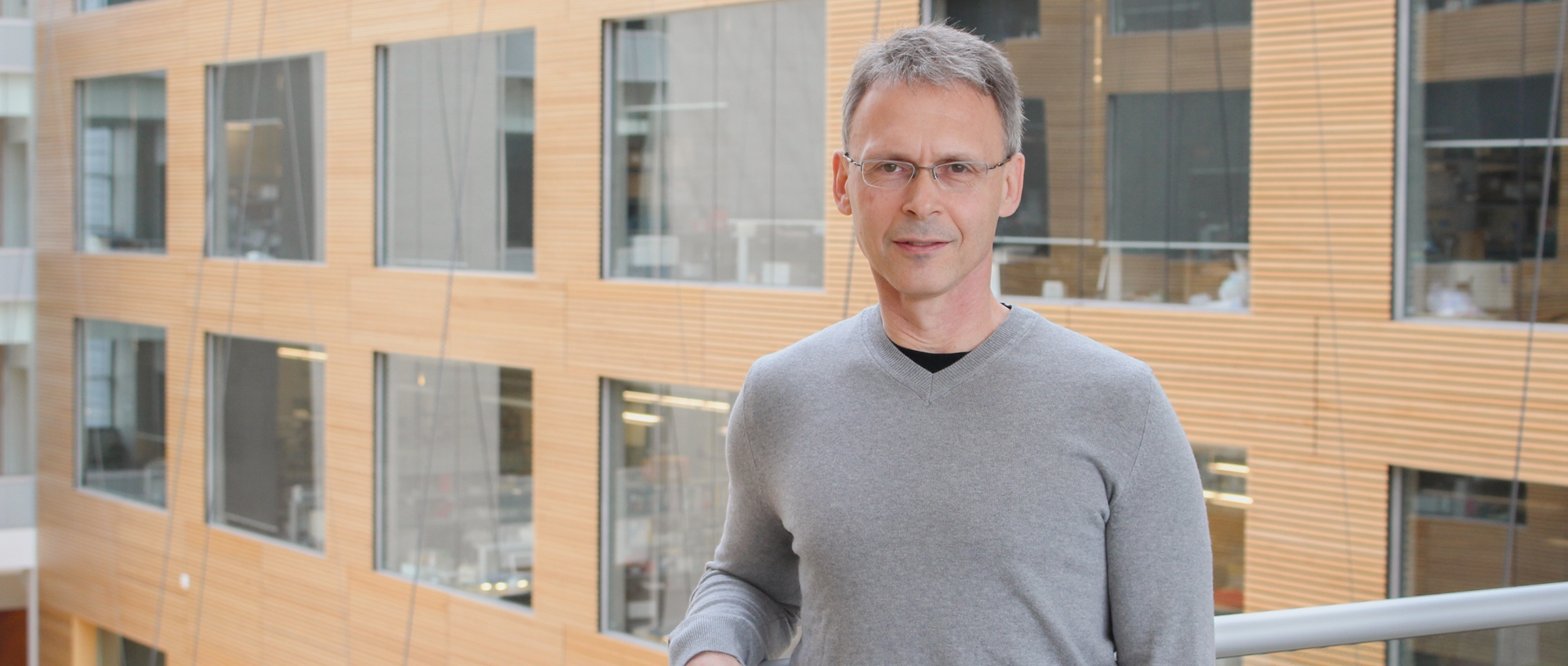Exploring the mysteries of ‘a beautiful system’
Dr. Ed Pryzdial’s research on blood clotting can aid understanding of many disorders, including COVID-19
Did you know that every second, your blood vessels are being damaged? And every second, they are being repaired? Repair happens through the fascinating process of blood clotting, or coagulation.
When a blood vessel is injured ― whether it’s major damage from a stab wound, or minor damage related to pressure and temperature changes ― platelets in the blood stick to the injured area, forming a plug. Meanwhile, an intricate cascade of 10 proteins, called clotting factors, work to create and stabilize fibrous chains, which further reinforce the damaged area. An even larger number of proteins work together to make certain the clot only forms where and when it’s needed, in just the right amount, and for only as long as it’s needed. In this complicated cascade, each protein relies on the one before it to be activated.
“It’s a beautiful system that Mother Nature has created for us, but it’s a carefully balanced system. If the scale tips even a little bit, bad things happen,” says Dr. Ed Pryzdial, a scientist at Canadian Blood Services’ Centre for Innovation, who researches coagulation at the University of British Columbia.
A delicate balance
A tip in the direction of too little clotting is what characterizes bleeding disorders such as hemophilia and von Willebrand disease. Bleeding disorders are usually hereditary, with patients missing a protein “link” in the chain that allows for coagulation. Canadian Blood Services has a long history of helping these patients, including with medications derived from plasma ― a straw-coloured component of blood.
Securing Canada’s supply of plasma

Plasma, the straw-coloured component of blood, is used to make some medications used in the treatment of bleeding disorders. (Photo taken before the COVID-19 pandemic)
On the other hand, too much clotting can lead to thrombosis ― where a clot blocks the flow of blood in a vessel ― as well as strokes and heart attacks. The risk factors for excessive clotting can also be genetic, but are more often environmental: poor diet, insufficient exercise, smoking and the use of some birth control pills. Age and gender also play roles. Men and people of advanced age are more likely to experience more clotting.
“The ways to minimize risk are simple, but not always easy – getting enough exercise and eating right,” says Dr. Pryzdial.
How viruses can hijack coagulation
Sometimes, a virus can also affect coagulation, and Dr. Pryzdial has been investigating that relationship for more than two decades. His group, in collaboration with Centre for Blood Research scientist Dr. Ed Conway, is currently working toward understanding how viruses ― including the one that causes COVID-19 ― trigger clotting.
Research has already shown that normal coagulation can be disrupted by the mechanism through which many viruses reproduce and build their own outermost layer, called the envelope.
“They pirate our cells to make more viruses. Sometimes in the process of pirating our cells, proteins that are involved in clotting end up on the envelope. When this happens, all the normal processes that would prevent those proteins from participating in clotting are bypassed,” says Dr. Pryzdial.
HIV, hepatitis and herpes, among many other viruses, all infect cells that have clotting factors. It is likely that the virus that causes COVID-19 is doing the same.
“We know that the relationship between COVID-19 and coagulation is a major part of what’s making patients sick and sometimes killing people,” adds Dr. Pryzdial. “Severe acute respiratory syndrome (SARS), which occurs in some people with COVID-19, involves microscopic clots forming in people’s lungs. These may also form elsewhere in the body. We need to better understand what’s triggering them.
“Clotting and inflammation are closely linked in many conditions. COVID-19 is highlighting that those processes are part of the same giant, puzzling mechanism.”
Canadian Blood Services drives world-class innovation in transfusion and transplantation research through our Centre for Innovation. Click here to learn more about how you can help us meet the needs of tomorrow by helping our team of researchers and partners engage in innovative research that will have an impact for generations to come.



